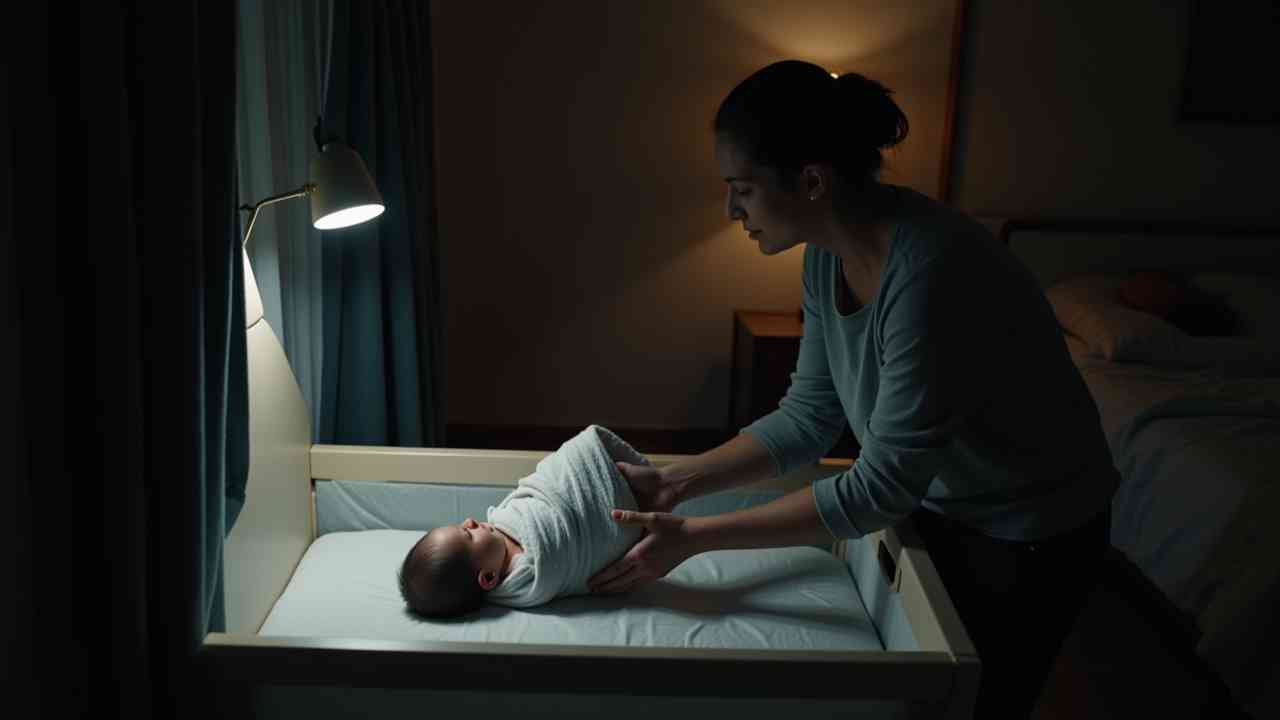
😴 How to Get Your Newborn to Sleep in a Bassinet (A Survival Guide)
😴 A Guide for When Your Newborn Will Only Sleep in Your Arms 😴
You have just spent what feels like an hour rocking, shushing, and feeding your newborn to sleep. They are finally in a deep, peaceful slumber in your arms. You tiptoe over to the bassinet, and the second their back touches the mattress, their eyes fly open, and the crying begins. If this sounds familiar, you are in the right place. A newborn who won't sleep in their bassinet is one of the most common and exhausting challenges of early parenthood.
First, and most importantly, know that you are not creating a "bad habit," and your baby is not manipulating you. This is a normal, biological, and instinctual need for a newborn. Understanding the reasons behind it is the first step to finding gentle solutions. This guide will explain why this happens and what you can do about it. ✅
🤔 Why Does This Happen? The 'Fourth Trimester' Explained
For the nine months of pregnancy, your baby was in a perfect environment. It was warm, snug, and full of constant motion and sound. The world outside the womb is cold, bright, and still. This transition is a major shock to their system. The first three months of a baby's life are often called the "fourth trimester."
During this time, your newborn craves the comfort and security of the womb. Being held in your arms is the closest they can get to replicating that feeling. It provides:
- Warmth and Closeness: They can feel your body heat and hear your heartbeat.
- A Sense of Security: Being held snugly helps to calm their immature nervous system.
- Suppression of the Moro Reflex: The startle reflex, where a baby suddenly flings their arms out, is a major cause of waking. Being held securely prevents this from happening.
- What Are Some Gentle Strategies to Help?
While this phase is normal, you also need to rest. The goal is not to force independence, but to gently transition your baby to a safe sleep space. This is not about sleep training; it is about soothing.
1. Perfect the Swaddle
A snug swaddle is your number one tool. It is the best way to replicate the tight, secure feeling of the womb. A good, tight swaddle helps to suppress the startle reflex that can jolt your baby awake the moment you put them down.
2. Wait for a Deep Sleep
Newborns cycle between active and deep sleep. If you try to transfer them during active sleep (when their eyes are fluttering and they are twitching), they will wake instantly. Wait until they are in a deep sleep. A good test is to lift one of their arms gently; if it is completely limp and floppy, they are likely in a deep sleep.
3. The 'Warm Bassinet' Trick
The cold surface of a bassinet can be jarring for a baby used to your warm body. You can use a heating pad to warm the bassinet sheet before you put the baby down. Crucially, you must remove the heating pad before you place your baby in the bassinet.
4. Use Your Scent
Your scent is very comforting to your baby. You can try sleeping with the bassinet sheet for a night before using it, so it smells like you.
5. Use White Noise
A consistent, low rumbling sound from a white noise machine can be very calming. It helps to mimic the constant whooshing sounds of the womb and can block out other household noises.
The cozy, cool nights of autumn are a perfect time to create a warm and secure sleep environment for your baby. Be patient with your little one, and with yourself. This phase, while exhausting, is very short. ❤️